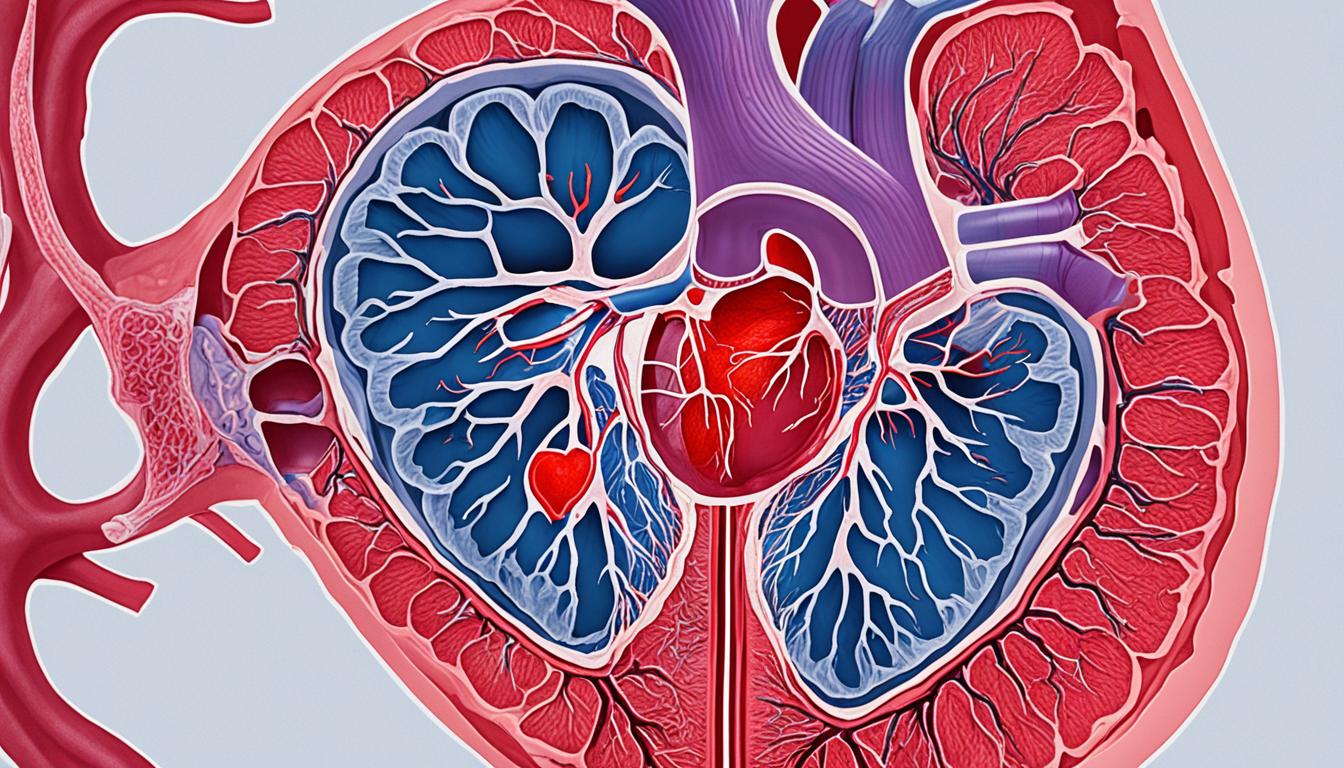Endocardial cushion defect is a complex heart problem. It affects the growth of certain heart parts during a baby’s development. Because these parts don’t grow right, there’s a hole between the heart’s upper chambers. This can make a person very sick, especially babies.
Both genes and things in the environment can lead to this heart issue. Sometimes, problems in genes that control heart growth are a big reason. But, things around the baby during pregnancy might also have a part in causing this defect.
New ways to look inside the heart have made a big difference. Doctors now use echocardiograms to see the heart’s condition. This helps them decide the best way to help, whether it’s surgery or something else.
People with endocardial cushion defect might need surgery to fix their heart. But, there’s also another treatment that’s really exciting. Doctors are using stem cells to try and heal the heart from the inside. This is a very hopeful option in places like Thailand, where doctors are very skilled at treating this condition.
Key Takeaways:
- Endocardial cushion defect is a congenital heart defect characterized by abnormal development of the endocardial cushions and the mesenchymal cap of the septum primum.
- The clinical presentation of endocardial cushion defect can range from no symptoms to severe heart failure in infants if left untreated.
- Genetic and environmental factors contribute to the development of endocardial cushion defect.
- Advances in pediatric cardiology have improved the diagnosis and treatment options for this condition.
- Treatment options for endocardial cushion defect include heart surgery and stem cell therapy.
Understanding Endocardial Cushion Defect and its Causes
Endocardial cushion defect is a complex heart issue from birth. It shows up when the heart’s inner parts don’t form right.
This causes a link between the heart’s chambers. It’s due to the part that should divide them not growing as it should.
This heart issue comes from a mix of genetics and things in the environment. Genetic factors play a big role. Some people with certain genetic differences, like Down syndrome, have a higher chance of getting this heart problem.
Specific gene problems also link to this heart issue. About 20% of those with endocardial cushion defect may have these gene issues.
Aside from genes, sometimes it’s part of a bigger heart or genetic problem. For example, a certain gene issue is found in about 2% of endocardial cushion defect cases. People with this gene problem might also have DiGeorge syndrome.
While genes are a big part of why this heart issue happens, the environment can also add to it. More studies are ongoing to understand how genes and the environment work together in endocardial cushion defect.
Genetic Factors Associated with Endocardial Cushion Defect
| Chromosomal Abnormalities | Genetic Variants |
|---|---|
| Trisomy 21 (Down syndrome) | Harmful variants in genes encoding transcription factors and regulators of heart development |
| Trisomy 13 | Deletions of 22q11.2 (associated with DiGeorge syndrome) |
| Trisomy 18 | |
| Monosomy X (Turner syndrome) |
Knowing the genetics behind endocardial cushion defect is key. It helps make better tests and treatments. Researchers aim to find out more to help those born with this heart disease.
Diagnosis and Stem Cell Therapy for Endocardial Cushion Defect
Diagnosing endocardial cushion defect uses an echocardiogram. This tool doesn’t harm you; it uses sound waves to show your heart’s inside. It helps doctors see the issue clearly, letting them choose the best care.
After finding the problem, doctors offer choices like surgery and stem cells. Thailand has top-notch clinics and doctors skilled in fixing this heart issue. They carefully perform needed surgeries to make the heart better.
Stem cell treatment is a new method that’s showing a lot of promise. This therapy uses special cells to help the heart heal. It’s available in Thailand, promising better heart health and a brighter life for those with the defect.
In the end, diagnosing endocardial cushion defect is key to getting the right care. With top facilities and experts, Thailand offers great care for this heart condition.

